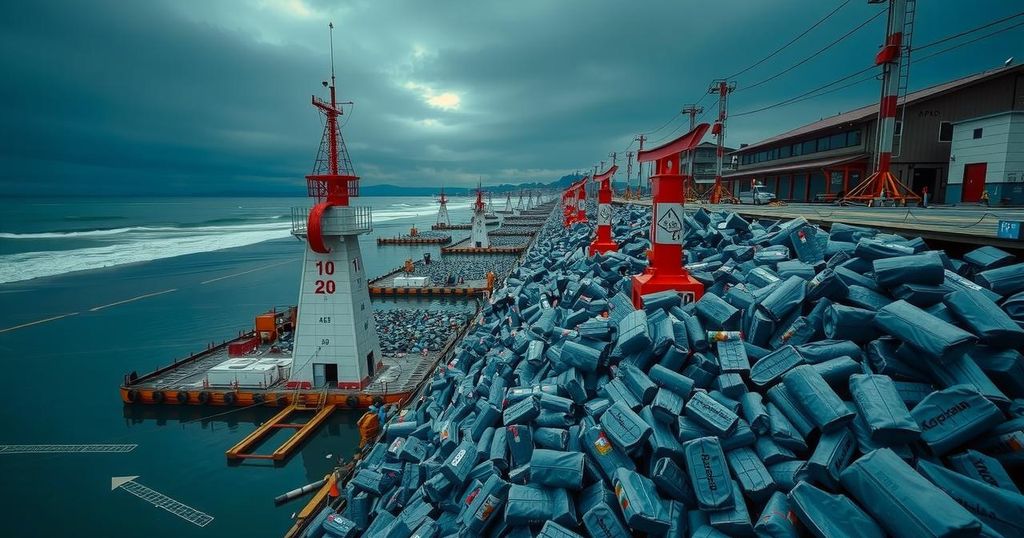Japan Earthquake and Tsunami of 2011: Relief, Rebuilding, and Recovery

The 2011 Tohoku earthquake and tsunami prompted extensive relief and rebuilding efforts led by the Japanese government and supported by international aid. Nearly 100,000 self-defense forces were deployed for rescue operations, while foreign nations and organizations provided assistance. Displacement, economic downturn, and infrastructural damage characterized the aftermath, with the government allocating approximately $155 billion for recovery initiatives through the newly established Reconstruction Agency, aimed at restoring affected areas over a decade.
In the aftermath of the catastrophic earthquake and tsunami that struck Japan on March 11, 2011, immediate and extensive relief efforts were initiated by both the government and international community. Japanese Prime Minister Kan Naoto promptly established an emergency command center in Tokyo and deployed approximately 100,000 members of the Japanese Self-Defense Force to facilitate rescue operations. In a demonstration of international solidarity, the United States and several other countries dispatched search-and-rescue teams and provided financial and material resources to assist Japan in its humanitarian crisis. Initially, rescue efforts faced significant challenges, including poor weather conditions which hampered transportation and the delivery of supplies to the devastated regions. The destruction was extensive; many towns and cities were obliterated, complicating the search for survivors, and much of the recovery work focused on retrieving bodies, many of which were found washed ashore after being swept into the sea. Hundreds of thousands of individuals were displaced, relying on emergency shelters that were often lacking in food and water. As conditions at the Fukushima nuclear plant became more dire, additional evacuations occurred, intensifying the crisis. The number of displaced individuals peaked at approximately 250,000 in the weeks following the disaster, with gradual reductions as temporary housing was established. However, by 2015, approximately 230,000 people remained displaced due to on-going risks from the Fukushima evacuation zone. Moreover, although transportation and service infrastructures in northern Honshu were restored to some extent, the regional economy experienced significant downturns due to extensive damage to businesses and uncertainties revolving around power supply issues. Notably, semiconductor and automotive production saw substantial declines immediately post-disaster. By late summer 2011, though, industrial activity began to rebound, achieving pre-disaster production levels by early 2012. In response to the overwhelming need for recovery, the Japanese government introduced several disaster-related budgets, with one major budget of $155 billion focused on rebuilding efforts across affected areas. The establishment of a cabinet-level Reconstruction Agency was deemed essential for the organization and implementation of reconstruction plans, set to continue for a decade. By early 2015, substantial progress had been made, with almost all disaster debris removed and significant advancements in infrastructural developments such as coastal seawalls and higher-ground developments.
The 2011 Tohoku earthquake and tsunami represented one of the most devastating natural disasters in Japan’s history, resulting in unparalleled destruction and loss of life. The dual catastrophe highlighted the vulnerabilities in Japan’s disaster preparedness and response systems, necessitating a re-evaluation of existing emergency protocols. Furthermore, it raised significant concerns regarding the safety of nuclear facilities in the face of natural disasters, particularly highlighted by the Fukushima nuclear crisis that ensued. The coordinated efforts for relief, rebuilding, and recovery involving local, national, and international channels provided critical lessons for future responses to natural disasters worldwide, emphasizing the importance of rapid mobilization and effective resource allocation.
The relief and recovery operations following the 2011 Tohoku earthquake and tsunami were monumental efforts, characterized by immediate mobilization of resources both locally and internationally. The establishment of temporary shelters and the significant involvement of the government and Reconstruction Agency enabled gradual recovery for affected populations. Despite ongoing challenges, particularly concerning displaced residents and economic impacts, progress has been marked by the restoration of infrastructure and production capabilities in the region. The disaster underscored both the resilience of the Japanese people and the necessity for effective disaster response strategies, presenting invaluable lessons for future preparedness initiatives.
Original Source: www.britannica.com






